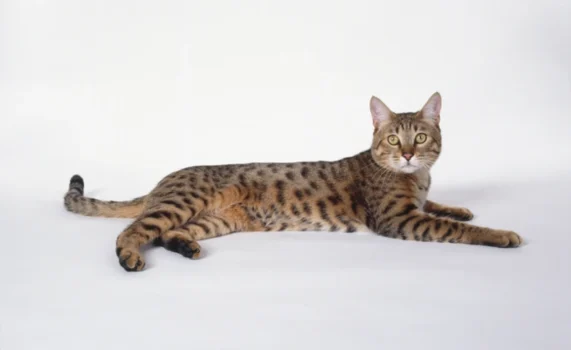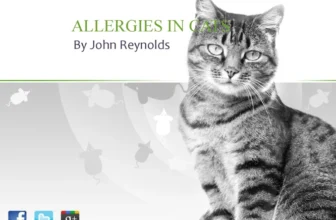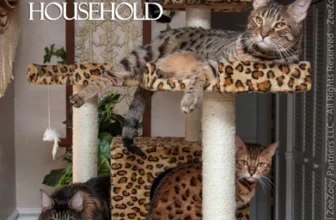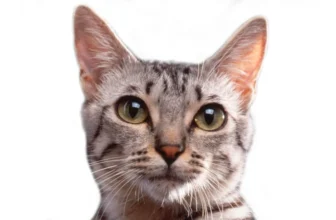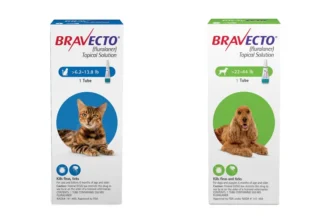Have you noticed your California Spangled Cat coughing up hairballs? Are you worried about your feline’s health and want to learn more about how to deal with this common issue? You’re not alone. Hairballs can be a nuisance for both cats and their owners. However, with the right understanding of their causes, symptoms, and prevention techniques, you can help your California Spangled Cat lead a happy and healthy life. In this article, we will guide you step-by-step through the process of dealing with hairballs in your California Spangled Cat, including tips on prevention and remedies for treatment. So, let’s get started!
What Causes Hairballs in California Spangled Cats?
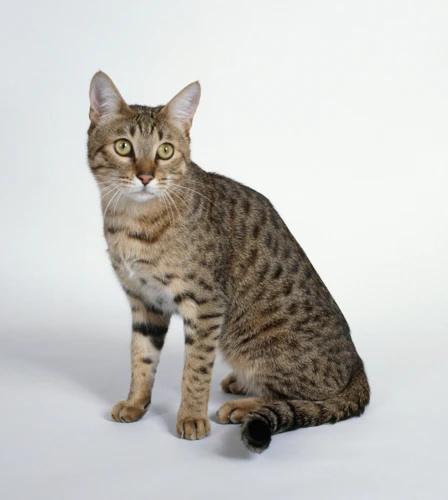
Hairballs are not just limited to California Spangled cats, they are a common problem faced by many cat owners worldwide. Hairballs occur when cats groom themselves and swallow hair. Cats have barbed tongues that pick up loose hairs, which then get swallowed. Usually, these hairs pass through the digestive system without any problem, but sometimes they get stuck in the digestive tract and form hairballs.
Understanding your cat’s grooming habits is essential to comprehend the cause of hairballs in California Spangled cats. These cats are known to be quite fastidious when it comes to grooming themselves. California Spangled cats are known for their short coats that do not require a lot of maintenance. However, despite their short hair, they still swallow hair in the process of grooming themselves.
Diet and digestive health play a significant role in causing hairballs in California Spangled cats. Cats that are fed a poor diet or do not drink enough water are at a higher risk of developing hairballs. A diet that lacks fiber can also exacerbate the problem, as fiber helps move hair out of the digestive system.
Seasonal shedding is another significant cause of hairballs in California Spangled cats. When cats shed, the loose hair gets intertwined with the fur and is ingested during grooming. Shedding is most prevalent during the change of seasons, particularly in the spring and fall.
Hairballs in California Spangled cats are a common problem that can cause discomfort and sometimes even lead to serious health problems. Understanding your cat’s grooming habits, maintaining proper diet and digestive health, and keeping tabs on seasonal shedding can greatly help in preventing hairballs. In case of severe hairball issues, seeking veterinary help is essential. Regular checkups with a vet can help in diagnosing and treating hairball issues in California Spangled cats and avoiding developing other health problems, like kidney disease or UTIs.
Understand Your Cat’s Grooming Habits
Understanding your California Spangled cat’s grooming habits is crucial in preventing hairballs. As a responsible cat owner, it’s your responsibility to learn about your cat’s breed-specific grooming routine. Regular grooming not only enhances your feline’s appearance but also reduces hairball formation. In this section, we will guide you on how to understand your cat’s grooming habits and how it impacts their hairball formation. Plus, we will mention the best grooming practices to follow to keep your cat healthy and happy. To learn more about keeping your California Spangled cat healthy, also check our article on keeping your cat’s teeth healthy.
Diet and Digestive Health
One of the main reasons behind hairballs in California spangled cats is their diet and digestive health. If your cat’s diet lacks essential nutrients or moisture, or if they eat too quickly, they are more prone to hairballs. This is because the hair they ingest during grooming cannot pass through the digestive system smoothly and can accumulate into a hairball.
To prevent this problem, you should ensure that your cat’s diet is rich in nutrients and moisture. Offer them quality cat food that contains minerals, vitamins, and fats essential for their health and well-being. Provide them with plenty of fresh water to keep their digestive system hydrated and help the hair pass through their system.
Sometimes, hairballs can also be a result of underlying digestive issues like constipation or inflammatory bowel disease. It’s important to consult with your vet to identify any such problems and treat them accordingly. They may recommend dietary changes or supplements to help your cat’s digestive system work better.
Some commercial cat foods have high fiber content which can reduce the chances of hairballs. However, make sure that the amount of fiber is not too high as it can lead to constipation. Strike a good balance between fiber and moisture to ensure that your cat’s digestive system is working correctly.
Maintaining a healthy diet and digestive system is crucial in preventing hairballs in California spangled cats. By providing your cat with a well-rounded diet and regular access to water, you can help them pass hair through their digestive system effectively. Don’t forget to consult your vet if you notice any problems with your cat’s digestion. Internal link to /cali-spangled-cat-uti-treatment/.
Seasonal Shedding
Seasonal shedding is another common cause of hairballs in California Spangled Cats. The California Spangled Cat breed is known to have a dense and short coat that sheds throughout the year. However, there are certain times of the year when they shed heavily, such as during the spring and fall. During these times, the amount of loose hair on your cat’s coat increases, which they then ingest while grooming themselves, leading to hairball formation.
To help manage seasonal shedding, it is crucial to ensure that your cat is groomed regularly. During the shedding season, you may need to groom your cat more frequently to prevent the accumulation of loose hair on their coat. Use a fine-toothed comb or a brush to remove dead and loose hair from your cat’s fur, thereby reducing the amount that they ingest. You can also include fatty acids such as omega-3 and omega-6 in your cat’s diet, which can help reduce shedding and hairball formation.
Additionally, it is essential to keep an eye out for any signs of discomfort or skin irritation on your cat’s skin, especially during the shedding season. Excessive scratching or licking on their skin may indicate a skin condition, which could be causing them to shed more than usual. In such cases, consult your veterinarian, who may recommend a suitable treatment plan.
Now, that we have discussed seasonal shedding, let’s move on to the signs and symptoms of hairballs in California Spangled Cats. If you notice any of these symptoms, it is essential to take action to prevent further complications. California Spangled Cats are prone to kidney disease, which can be aggravated by hairballs if left untreated.
Signs and Symptoms of Hairballs
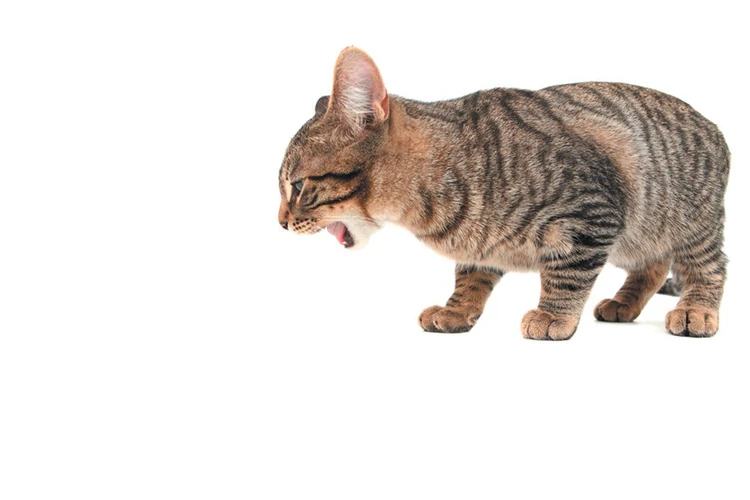
As a California Spangled cat owner, it’s important to be aware of the signs and symptoms of hairballs to ensure your pet’s health and well-being. Hairballs are formed when your cat ingests loose hair while grooming, and the hair accumulates in their stomach instead of passing through the digestive tract. If left untreated, hairballs can lead to potentially serious health issues, such as gastrointestinal blockages.
Coughing and retching: One of the most common signs of hairballs in cats is coughing and retching. When your cat is trying to expel a hairball, you may hear them hacking and gagging. In some cases, they may not be able to cough up the hairball and may need medical attention.
Decreased appetite: Hairballs can cause your cat to feel full and bloated, leading to a decreased appetite. If your cat is not eating or drinking as much as usual, it could be a sign of a hairball or another underlying issue.
Lethargy: If your normally active California Spangled cat suddenly seems sluggish and lethargic, it could be a sign of a hairball. The buildup of hair and other digestive issues can cause your cat to feel unwell and less energetic.
Constipation: Hairballs can cause constipation in some cats. If your cat is straining when trying to use the litter box or has not passed stools in a day or two, it’s time to visit the vet.
Visible hair in vomit or stool: One of the most obvious signs of hairballs in your cat is the presence of hair in their vomit or stool. If you notice hair in your cat’s vomit or stool, it’s time to take action to prevent future hairballs.
Keeping an eye out for these signs and symptoms of hairballs and taking action quickly can prevent potential health complications for your California Spangled cat. If you notice any of these signs, you can try some home remedies or take your cat to their veterinarian for further treatment. Regular vet checkups can also help prevent and treat underlying issues that may lead to hairballs, such as obesity, allergies, or skin conditions.
Prevention of Hairballs in California Spangled Cats
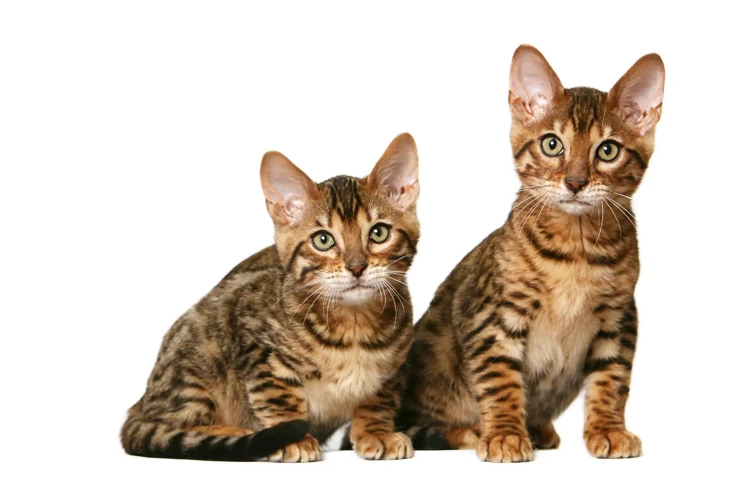
Cat owners often wonder what they can do to prevent hairballs in their California Spangled Cats. Fortunately, there are a few measures you can take to reduce the likelihood of hairballs forming in your feline’s stomach. By following the preventative measures outlined below, you can help your California Spangled Cat stay healthy and comfortable.
Regular Grooming
Maintaining regular grooming practices is crucial in minimizing hairballs in California Spangled cats. Regular brushing with a high-quality brush, such as FURminator Undercoat Tool, will help to reduce the amount of loose fur that your cat ingests during self-grooming. By brushing your cat’s fur on a daily basis, you are assisting your cat in getting rid of any loose fur before it can be swallowed and form hairballs.
To ensure that your grooming is effective, it is important to use a brush that suits your cat’s unique coat and grooming habits. Many California Spangled cats have a thick coat with fine hair, which requires extra attention to detail. Your vet or groomer can suggest the best brush for your cat’s coat.
Bathing your California Spangled cat regularly can also help to reduce the frequency of hairballs. Use a gentle cat shampoo and make sure to rinse thoroughly to avoid any additional skin irritation. Be sure to dry your cat throughly afterwards and follow proper drying methods, as damp fur can lead to matting and unhealthy skin.
Trimming your cat’s fur can also help with hairballs, especially in areas where matting can occur. This can be done by a professional groomer or you can learn how to do it yourself. Simply using scissors can often lead to uneven cuts, so invest in a good quality pair of clippers to trim your cat’s fur.
Regular grooming is also a perfect time for you to bond with your cat. By providing your cat with attention and regular grooming, you are helping to mitigate feelings of loneliness and stress, which can in turn, reduce hairball formation. If you suspect that your cat’s behavior may be related to stress, explore methods for stress relief such as playing more often, giving them space to scratch and climb, or even employing various types of calming tools.
If you want to learn more about the importance of regular grooming and how it has an effect on your California Spangled cat’s health, consider visiting an expert in one of these topics: obesity treatment for California Spangled cats, allergies that can affect your California spangled cat, veterinary check-ups for California Spangled cats, methods to reduce California Spangled cat’s stress, and skin conditions in California Spangled cats.
Dietary Supplements and Moisture
Maintaining your California Spangled Cat’s digestive health can prevent hairballs from forming. One way to accomplish this is by providing your cat with necessary dietary supplements and moisture. Here are some dietary supplements and moisture tips that can help prevent hairballs.
- Fiber: Adding a source of fiber to your cat’s diet can help reduce hairballs. Cats require a diet high in protein, but fiber is necessary for digestive health. Mix some bran into your cat’s food or feed them high-fiber treats such as cat grass, which is rich in enzymes that help break down eaten hair in the gut.
- Water: Make sure your cat has access to fresh water at all times. Adequate hydration helps lubricate the digestive tract, which can stimulate the intestinal movement and facilitate your cat’s ability to pass hair naturally. Dehydration can lead to constipation, and this can cause hairballs to form. You can also offer your cat canned food, which has a higher moisture content than kibble.
- Vitamin and Mineral Supplements: Just like us humans, cats also need vitamins and minerals for good health. Vitamin and mineral supplements can help in keeping your cat’s digestive system healthy. Ensure they get omega-3 and -6 fatty acids, which can be obtained from fish oil, salmon, sardines or other supplements. They also need Zinc, and Magnesium which is beneficial in promoting skin and coat health. Consult your vet before giving your cat any supplements to make sure they are safe.
Remember, when it comes to nutrition and digestive health, it is important to feed your California Spangled Cat a balanced and healthy diet tailored to their specific needs. Incorporating any of these tips and tricks in your cat’s diet can help keep their digestive system functioning smoothly and prevent the formation of hairballs.
Stress Relief
Stress can be a major factor contributing to hairballs in California Spangled cats. This can be caused by changes in the cat’s environment, such as moving to a new home, changes in daily routine or the introduction of a new pet. Stress can also be triggered by loud noises, such as construction work, or household appliances like vacuum cleaners.
There are a number of stress relief techniques that can help prevent hairballs in your California Spangled cat. Some of these include:
- Providing a Safe Space: Cats need a space where they feel safe and secure. This can be achieved by setting up a cozy bed in a quiet part of the house where your cat can retreat if it feels anxious or stressed.
- Interactive Play: Interactive play can be an excellent way to help your cat relieve stress. Use toys that mimic the movement of prey to stimulate your cat’s natural hunting instincts and provide a sense of satisfaction and accomplishment.
- Calming Music: Playing soft, calming music can have a soothing effect on cats, helping them relax and reducing their stress levels. You can find specially curated playlists designed specifically to reduce stress in cats on various music streaming platforms.
- Aromatherapy: Using essential oils like lavender and chamomile can have a calming effect on your cat. Look for a diffuser specifically designed for use with cats and use oils with caution, always following the instructions carefully and never allowing your cat to ingest them.
- Hiding Treats: California Spangled cats, like most cats, have a natural instinct to hunt and play. Hiding treats around the house can help stimulate this instinct, providing an outlet for energy and reducing stress levels.
By incorporating stress relief techniques into your cat’s daily routine, you can help reduce their stress levels and minimize the likelihood of hairballs forming. Remember that every cat is unique, and what works for one may not work for another. Be patient, and always monitor your cat’s behavior to ensure you are providing the best possible care.
Home Remedies to Treat Hairballs in California Spangled Cats
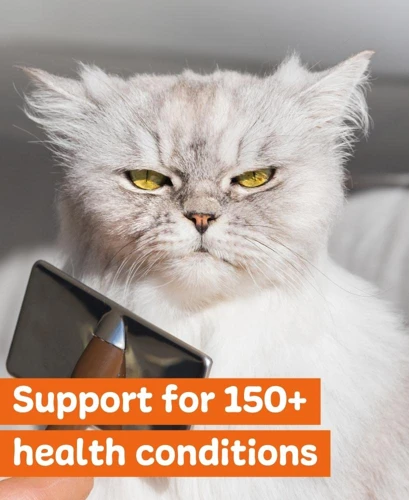
As a responsible cat owner, you want your California Spangled cat to be healthy and happy. Hairballs can be a common issue for cats, and while prevention is key, sometimes they still occur. If your cat is experiencing discomfort due to hairballs, there are some home remedies that can help alleviate the problem. These natural alternatives can provide relief and improve your cat’s overall well-being. Let’s explore some of the best remedies for treating hairballs in California Spangled cats using ingredients you may already have at home.
Pumpkin Puree
One easy and natural remedy for hairballs in California Spangled cats is pumpkin puree. The high fiber content in pumpkin is great for aiding in digestion and promoting regular bowel movements, which can help prevent hairballs from forming in the first place. Here are the steps to use pumpkin puree as a home remedy for hairballs:
- Choose a canned pumpkin puree with no added sugar or spices. Make sure it is 100% pumpkin.
- Take a small amount of pumpkin puree, about a teaspoon for adult cats, and mix it with your cat’s food once a day.
- Repeat this process for about a week or until your cat’s hairball symptoms improve. You may need to continue administering pumpkin puree as a preventative measure if your cat is prone to hairballs.
Note: It’s important to remember that pumpkin puree is not a cure-all for hairballs. If your cat continues to experience symptoms or has a severe hairball obstruction, it’s important to seek veterinary care.
In addition to pumpkin puree, there are other natural remedies that may help treat hairballs in California Spangled cats. Keep in mind that these remedies should not replace veterinary care and it’s important to consult with your veterinarian before administering any home remedies.
Butter or Fish Oil
For some California Spangled cats, adding either butter or fish oil to their diet can help with hairball prevention and treatment. Both of these ingredients can help lubricate the digestive system and allow for easier passage of hairballs.
Butter is a fat source that can be given as a treat to cats. It contains high levels of conjugated linoleic acid (CLA), which can aid in reducing inflammation and supporting a healthy coat and skin. However, too much butter can lead to weight gain and possible digestive issues, so it should be given in moderation.
Fish oil is another great option for cats with hairballs, as it contains essential fatty acids that can help reduce inflammation and promote a healthy coat and skin. It also helps lubricate the digestive system, allowing for easier passage of hairballs. Fish oil can either be added to your cat’s food or given as a supplement.
It’s important to note that not all cats may respond well to butter or fish oil, and it’s best to consult with your veterinarian before adding any supplements to their diet. Additionally, be sure to monitor your cat’s weight and digestion while incorporating these ingredients into their diet.
Table:
| Ingredient | Benefits | How to Use |
|---|---|---|
| Butter | Contains high levels of conjugated linoleic acid (CLA), which can aid in reducing inflammation and supporting a healthy coat and skin. | Give as a treat in moderation. |
| Fish Oil | Contains essential fatty acids that can help reduce inflammation and promote a healthy coat and skin. Helps lubricate the digestive system, allowing for easier passage of hairballs. | Add to your cat’s food or give as a supplement. |
Herbs
Herbs can be a great natural remedy for hairballs in California Spangled Cats. One option is to incorporate small amounts of catnip into their diet or in a small amount of water. Catnip helps to promote healthy digestion and can help your cat pass hairballs before they become a problem. Another effective herb is parsley, which can also be chopped and added to your cat’s meals. Parsley contains enzymes that aid in digestion and can help break down hairballs.
Another alternative is using chamomile tea, which is known for its calming properties and can also help soothe your cat’s digestive system. Adding a small amount of chamomile tea to your cat’s water can encourage your cat to drink more fluids, which can help prevent hairballs from forming.
Lastly, using a small amount of flaxseed oil can be an effective home remedy. Flaxseed oil is rich in omega-3 fatty acids, which can help promote healthy skin and coat while also aiding in digestion. Mix a small amount of flaxseed oil with your cat’s food to help prevent hairballs from forming, as well as keeping their coat shiny and healthy.
Using herbs as a natural or home remedy to treat hairballs in California Spangled Cats can be a good option that may not have any side effects as long as the herbs are used appropriately. It’s important to consult with your veterinarian first before trying any home remedies or before incorporating herbs into your cat’s diet.
When to See a Veterinarian
As a pet owner, it is essential to monitor your California Spangled Cat’s health and seek veterinary care when needed. While hairballs are a common issue in cats, it is crucial to know when to seek professional help. If your cat exhibits any of the following symptoms, it is time to take a trip to the veterinarian.
Gagging: If your cat has difficulty expelling a hairball, it may cause gagging or retching. However, if your cat is gagging continuously, it might be a sign of an underlying issue.
Constipation: Severe hairball blockages can cause constipation in your cat, leading to a decrease in appetite or bowel movements.
Diarrhea: Chronic hairball issues can lead to diarrhea that contains small amounts of fur. This symptom can signify an intestinal blockage or underlying digestive issues.
Loss of Appetite: If your cat is experiencing hairball issues, they may stop eating or drinking water since it can worsen their symptoms.
Lethargy: If your cat is lethargic and not displaying their usual behavior, it could indicate an underlying medical condition, including hairballs.
If your California Spangled Cat exhibits any of these symptoms for an extended period, it is time to consult a veterinarian. They can perform a physical examination and perform imaging tests if necessary. In severe cases, where home remedies and preventative measures do not work, your veterinarian can perform a hairball removal procedure under sedation.
As a pet owner, it is vital to pay attention to your cat’s behavior and signs of discomfort. If in doubt, take your California Spangled Cat to the veterinarian. Remember, regular grooming and preventative measures can help avoid hairball-related issues, but professional care may be necessary if complications arise.
Conclusion
After reading through this article, you should now be equipped with the knowledge and tools necessary to deal with hairballs in your California Spangled cat. While hairballs may be a common concern for cat owners, they can be managed with relatively simple preventative measures and home remedies.
Regular grooming and dietary supplements can go a long way in reducing the number of hairballs your cat experiences. Additionally, keeping your cat’s stress levels low can also have a positive impact on their digestive health.
In the event that you do notice your cat experiencing discomfort or other symptoms related to hairballs, there are several safe and natural remedies that can help. Pumpkin puree, butter or fish oil, and certain herbs can all help to alleviate hairball-related symptoms.
However, it’s important to remember that if your cat is experiencing frequent or severe symptoms, it’s always best to consult with a veterinarian. They can help to diagnose any underlying health issues and recommend a treatment plan specific to your cat’s needs.
Overall, the key to managing hairballs in your California Spangled cat is to stay vigilant, keep their digestive health in check, and be proactive in preventing and treating any symptoms that may arise. With a little bit of effort and care, you can ensure that your furry friend remains happy and healthy for years to come.
Frequently Asked Questions
How often should I groom my California Spangled Cat?
You should groom your California Spangled Cat at least once a week.
What types of brushes are best for grooming my California Spangled Cat?
A slicker brush and a metal comb are most effective for grooming your California Spangled Cat.
Can I give my California Spangled Cat hairball prevention supplements?
Yes, there are hairball prevention supplements available for cats such as malt paste and Laxatone.
What type of diet is best for preventing hairballs in California Spangled Cats?
A high-fiber diet that includes wet food can help prevent hairballs in California Spangled Cats.
Can hairballs cause health problems for California Spangled Cats?
Yes, frequent hairballs can cause digestive issues and can lead to intestinal blockages if not properly treated.
Can I use human hairball remedies on my California Spangled Cat?
No, it is not recommended to use human remedies on cats as they can be harmful to their health.
Can stress cause hairballs in California Spangled Cats?
Yes, stress can cause excessive licking and grooming, leading to hairballs.
Is it normal for California Spangled Cats to vomit after hairball treatment?
It is common for cats to vomit after treatment for hairballs, but if it persists or is accompanied by other symptoms, consult with a veterinarian.
Can I use olive oil to treat hairballs in my California Spangled Cat?
No, olive oil can cause diarrhea and vomiting in cats, and should not be used to treat hairballs.
Do California Spangled Cats have a predisposition to hairballs?
No, California Spangled Cats do not have a specific predisposition to hairballs, but like all cats, they are susceptible to them and need proper preventative care.

